Many foods that are popular around the world have their origins in the province of Sichuan. Sichuan cuisine originated in China’s southwestern province and is the country’s most popular dish. This cuisine is well-known for its complex flavours, especially the unique flavour of Sichuan pepper that isn’t found in other food cultures.
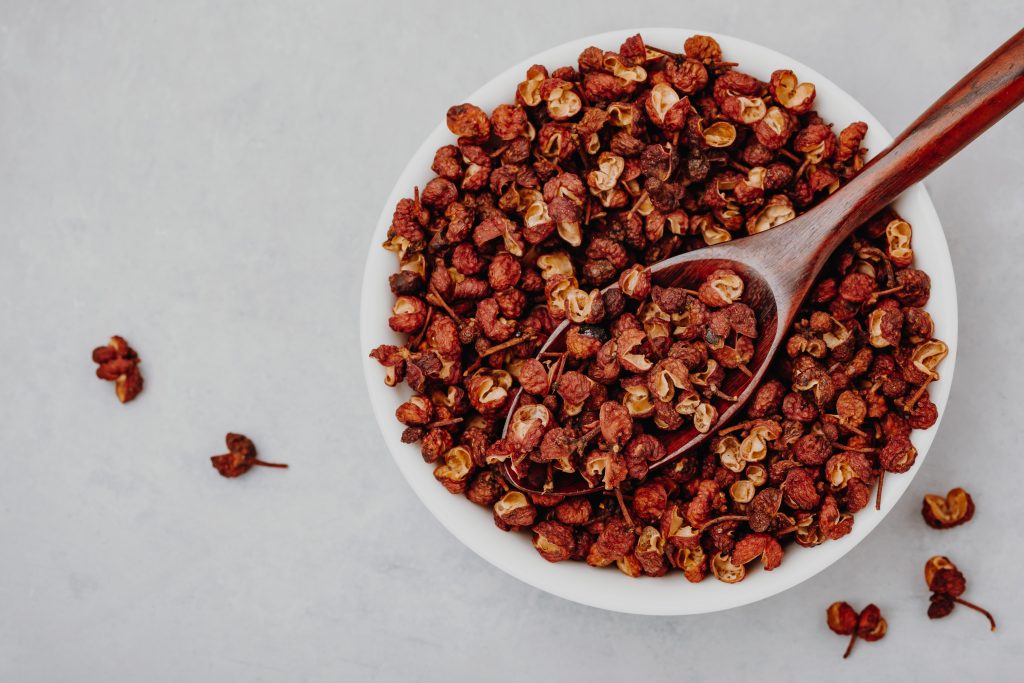
About Sichuan Cuisine
Many people associate Sichuan (Szechuan) cuisine with spiciness and fiery dishes that leave you guzzling huge amounts of water throughout the evening to cool your taste buds. People are frequently startled to learn that at least one-third of this Chinese cuisine’s recipes are not spicy. That is not to argue that Sichuan’s reputation for generating “mouth-burning” dishes is unjustified. In addition to scorching classics such as “Hot and Numbing Fish” and “Kung Pao Chicken,” however, Sichuan is the home of “Tea Smoked Duck,” an intriguing delicacy produced by smoking a duck over tea leaves.
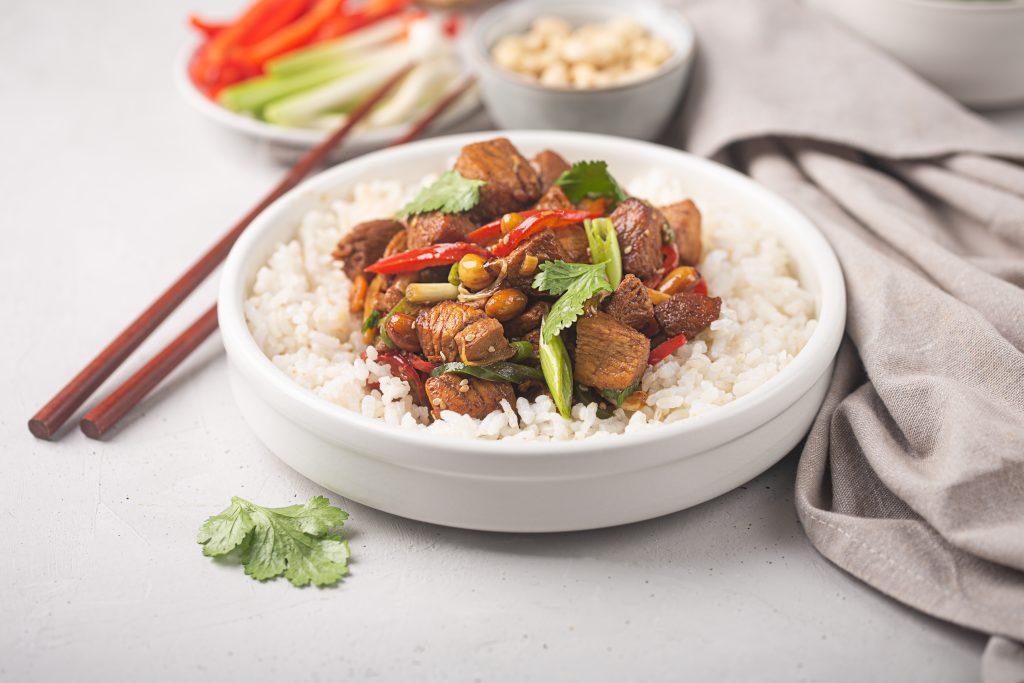
Furthermore, the chilli peppers that have brought fame to Sichuan cuisine are a very recent addition. There is a widespread belief that Christopher Columbus brought chilli peppers back from his travels (on behalf of the Spanish crown). Most versions indicate that Columbus named the plant pimento or “pepper” because he mistakenly believed he had discovered black pepper.
The Essence Of Sichuan Cooking
Sichuan cooking emphasizes the morphing of flavour, which varies in density and weight. Ingredients like chilli peppers, prickly ash, and black pepper are essential for any meal purporting to be Sichuan in origin. It’s not always the major component (chilli), although it often serves as a food flavour.
Depending on the weather and the dinner, Sichuan cuisine can have a wide range of flavours. For instance, the cold temperature in the winter and spring allows for a greater abundance of heat. However, in the summer and fall, when it is hot and dry, a 30% reduction in heat is warranted. Sichuan flavour is subtle and adaptable.
That’s why, while being rather light, Sichuan is popular for its rich, deep, and strong flavour. Those who have tried Sichuan cuisine rave about it and say it is an experience they will never forget. The meals of Sichuan cuisine not only look nice and appetizing and are healthy because of the careful balancing of colour, scent, flavour, shape, and nutrition.
Usage Of Chilli And Pepper
Pepper’s introduction changed the habits of the Chinese. Pepper is known as chilli pepper to the Sichuan people. In that time, Sichuan people, especially Chengdu, saw red peppers and tried them, perhaps noticing that they were more unique than the spicy food we enjoy today, like cornel and mustard. It was more intense, spicier, and more clear. It also has a scent, which is why the Sichuan people like it.
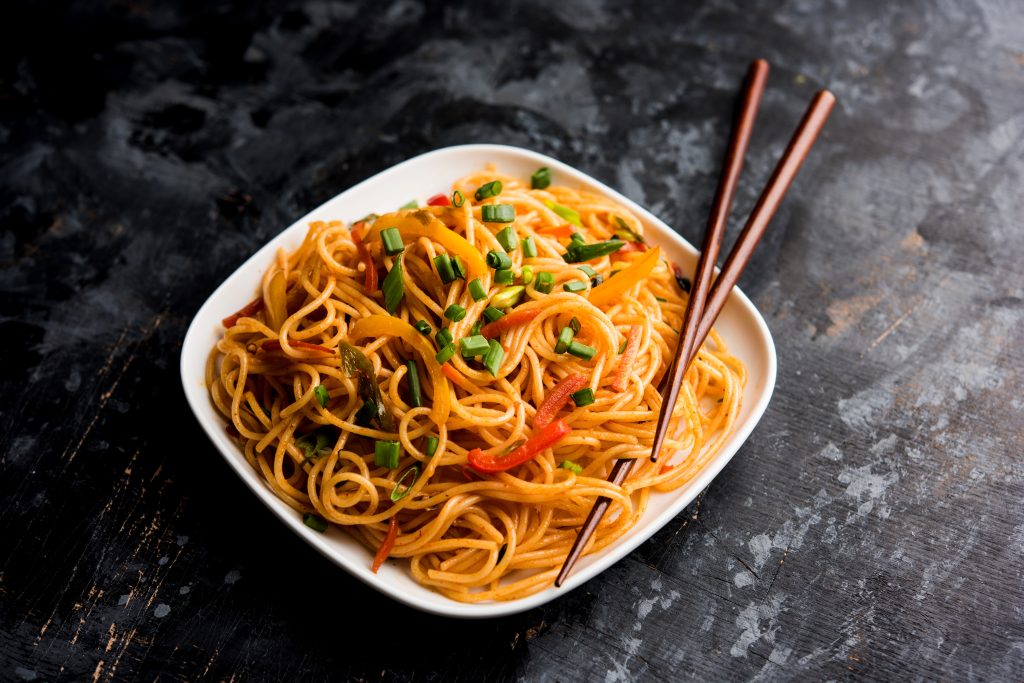
Moreover, Sichuan peppercorn is high in capsaicin and vitamins. Pepper can improve blood circulation and relieve moisture and coldness. It’s very beneficial since it’s not too spicy yet has a pleasant scent. The favourable natural and geographic conditions provide the native ingredients to prepare Sichuan food.
Seven Most Distinctive Flavors For Successful Sichuan Cooking
The tastes of Sichuan food are complex. Fish taste, spicy, hot pepper, hot and sour flavour, pepper and chile, dried tangerine or orange peel, weird flavour, are some of the most well-known flavours.
1. Pepper And Chilli Flavour
You must soak Sichuan peppercorn in wine overnight before being chopped with green onion and incorporating them into fine mud, vinegar, soy sauce, sugar, and other ingredients. The spiciness, flavour, and salty taste best describe the flavour profile. Spicy chicken in a red sauce is possible.
2. Fish Flavour
To make this, fry onions, pickled peppers, garlic, ginger, and salt till it becomes soft. Make a paste from the beans and other ingredients and stir-fry it in the red oil. The flavour is red in colour and not overly sweet, sour, or hot. You can use it for cooking fried pork with sweet and tangy sauce, or you can use it for cooking eggplant in garlic sauce.
3. The Hot And Sour Flavour
The method of preparation involves combining various ingredients after being stir-fried with garlic, green onions, and bean paste, ginger. The former has sour and peppery, with a touch of sweetness, qualities. In contrast, the latter has a refreshingly peppery flavour and a salty finish.
4. Spicy Flavour
To prepare, brown dried red pepper, sauté Sichuan peppercorns, then stir-fry green ginger and garlic. The addition of Sichuan peppercorns can further enhance the hemp flavour. Salsa is red in colour and has a spicy, fresh, sweet, and slightly sour and sweet taste. Mapo tofu is a possible outcome when using this sauce. However, some people also prefer mala.
5. Orange Peel Flavour
It is important to sauté the dried pepper and stir-fry the Sichuan peppercorns. You can also add and stir-fry with a piece of orange peel. Dried tangerine peel, if used, is best added at the end of cooking. Sauté the onion, ginger, and garlic until soft, then add in the Sichuan wide bean paste. Beef marinated in orange peel produces a smoky, tangy, and spicy dish.
6. Hot Pepper Flavour
For starters, sauté the ginger, garlic, and onions. Then, taking care not to burn it, stir-fry a mixture of bean paste, additional ingredients, and red oil. It has a mildly sweet and sour flavour profile. You can prepare chicken chilli with this sauce.
7. Odd Flavour
For this flavour, you’ll need to saute the Sichuan bean paste until it turns red, combine the sesame paste with some fresh soup, and add the other ingredients. All the senses are engaged: heat, sweetness, sourness, saltiness, and a clean, crisp scent. You may give it a chicken aroma, a peculiar duck aroma, etc.
Primary Ingredients Used In Sichuan Cooking
Another distinguishing feature of Sichuan food is the variety of meals made from a single ingredient. Salted-fried pork slices, Australian sweet, and hot shredded pork, re-cooked pork slices, steamed pork chunks, fried pork cubes, white cut hot pork, salty boiled cabbage, sweet steamed pork chunks, sliced pork cooked with rice crust, pork steamed with ground glutinous rice, etc., can all be made from a single piece of half-fat, half-lean pork in Sichuan cuisine.
Unique Techniques Involved In Sichuan Cooking
Stir-frying, dry-stir frying, quick-frying, pan-frying, flash-frying, sautéing, deep-frying, pickling, scalding, stewing in soy sauce, instant boiling, dressing, boiling, smoking, braising, steaming, roasting, crisp-frying with syrup, and so on are just a few of the more than twenty main cooking techniques used to make Sichuan food.
The most common method is stir-frying, which has the advantages of taking a relatively short amount of time, requiring a high cooking temperature, and producing fresh, tender, and flavorful results with minimal moisture loss.
Seasonings Used In Sichuan Food
Sichuan pepper, shallots, broad bean chilli paste, black pepper, chile, garlic, and ginger are essential to this Chinese cooking. They’re essential for bringing out the bold flavours for which the meals are known.
Famous Dishes in Sichuan Cuisine
1. Mapo Tofu
Bean curd, known as tofu, is typically topped with minced pig or beef and served in a chilli-and-bean-based sauce that is typically thin, greasy, and brilliant red in hue. Numbing, spicy-hot, fresh, delicate and soft, aromatic, and flaky all define the flavour of mapo tofu well. Outside of China, you may easily locate restaurants serving mapo tofu.
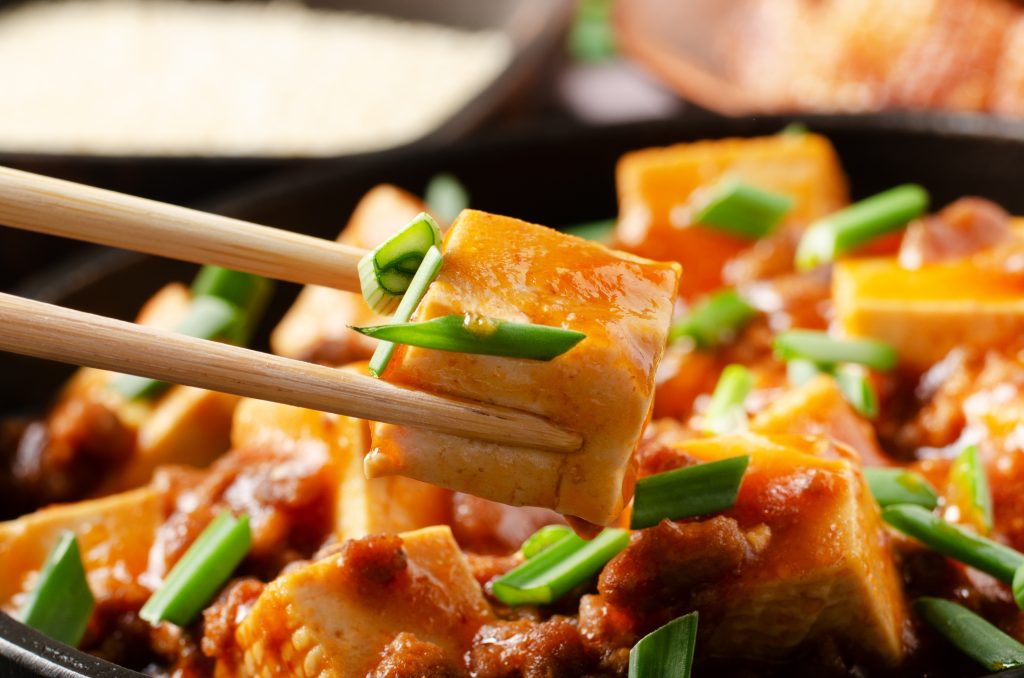
2. Kung Pao Chicken
To make this dish, chopped chicken and dry red pepper are fried with golden peanuts. The Western preference for spicy diced chicken far outweighs that for mapo tofu. Because outside of the province of Sichuan, it is typically served less spicy, if at all.
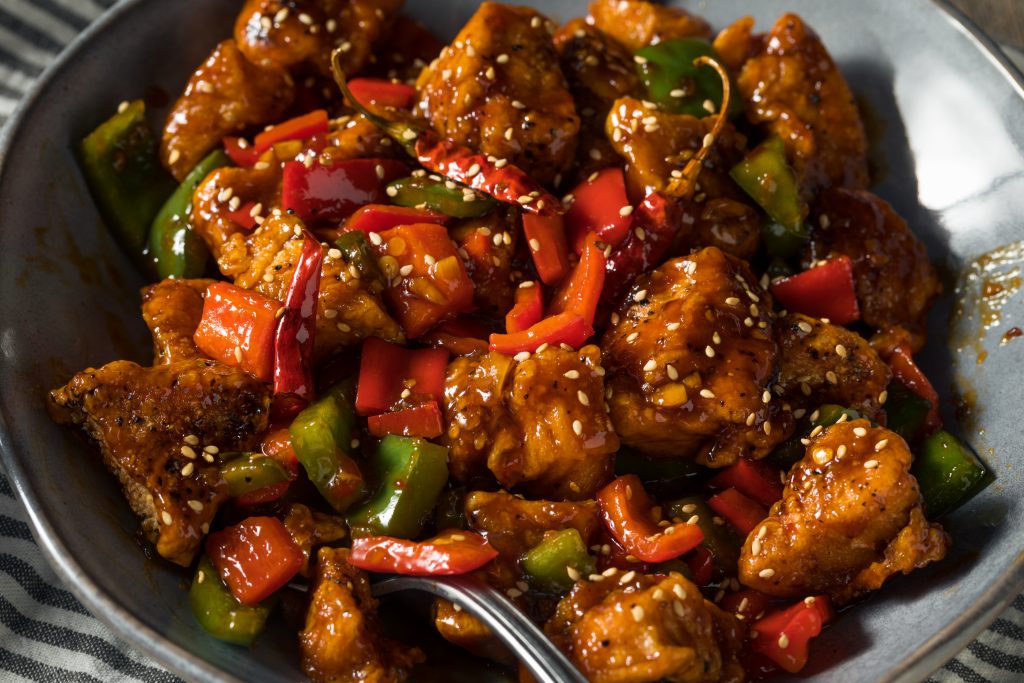
3. Fuqi Fei Pian
The thinly sliced beef (or bovine lung or tongue) in Guo Zhaohua’s Fuqi Fei Pian is seasoned with chile oil. This well-known delicacy from Sichuan has an interesting history that the name alludes to.
4. Dandan Noodles
Dandan noodles, another classic Sichuan dish that has gained popularity worldwide, may be prepared in various ways. Dandan noodles from Sichuan province are infused with a conflagration of flavours, including salty, nutty, spicy, and smokey, rather than the more muted versions you would find elsewhere. Noodles are doused in chile oil and topped with minced pork, veggies, Sichuan pepper, and Sichuan pepper flakes.
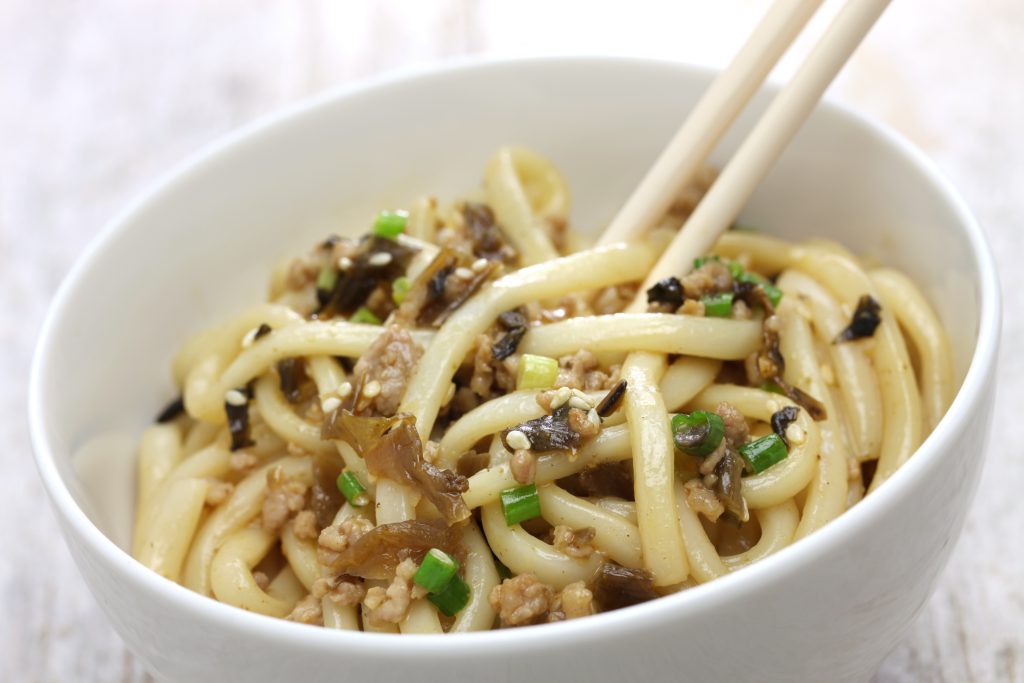
5. GanBian Sijidou
There is a common misunderstanding that this meal is heavy and dripping with oil. Green beans are stir-fried properly in the Sichuan region. However, they should be airy and crisp. Dry-frying, in which less oil is used and a longer frying time is required, is a common method for preparing beans such as snap beans and string beans. This process results in a crunchy coating on the beans. The next step is to toss the beans in spicy oil, Sichuan pepper, scallions, ginger, and garlic.
Conclusion
Sichuan food, or Szechuan cuisine and Chuan cuisine, is among the eight Chinese cuisines prominent internationally in Sichuan and Chongqing. It has the greatest market share in China. Sichuan meals are distinguished by their high levels of heat and spice, distinct fish flavours, vivid colours, liberal use of seasonings (particularly pepper and prickly ashes), and a wide range of preparation techniques.
Famous and emblematic dishes from Sichuan cuisine include the Ma Po Tofu, Sichuan hot pot, Kung Pao Chicken, sliced pork in hot chilli oil, and sliced beef and ox organs in chilli sauce.



